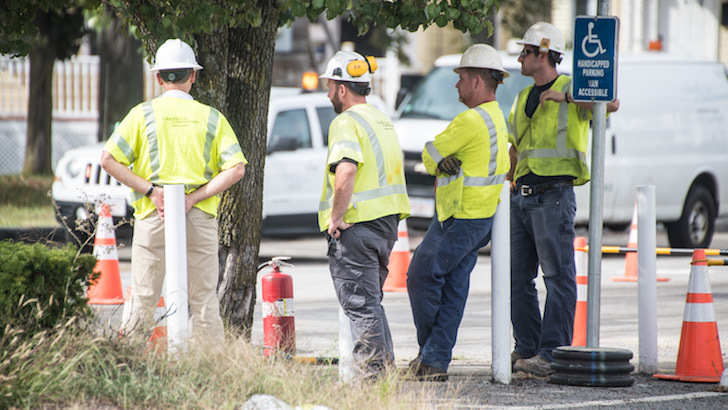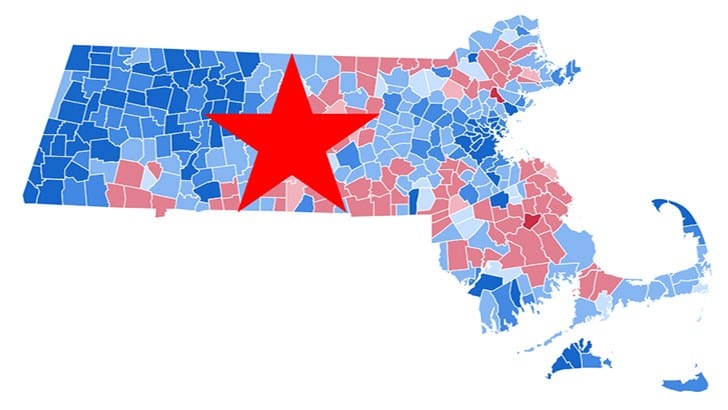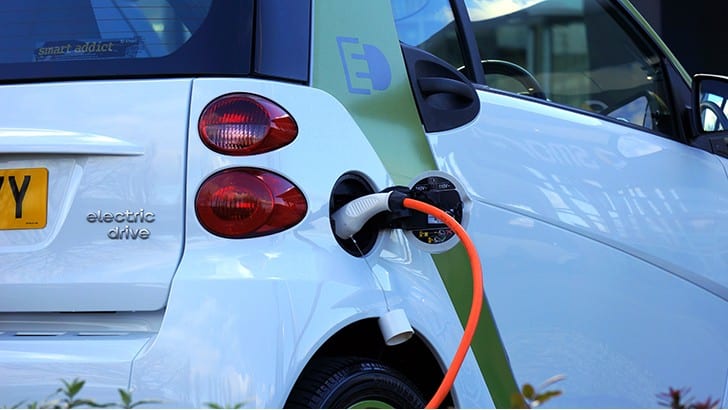![Photo by Brad Fagan (IMG_0119) [CC BY-SA 2.0 (https://creativecommons.org/licenses/by-sa/2.0)], via Wikimedia Commons](https://digboston.com/wp-content/uploads/2018/10/Boston_2017_Womens_MarchIMG_0119_32389345611-1024x683.jpg)
October 31, 2018
BY JASON PRAMAS @JASONPRAMAS
In August 2017, over 40,000 Bostonians marched on Boston Common to tell a small gaggle of nearly incoherent hard-right louts that they were not welcome in our city. Especially in the wake of a white supremacist rally in Charlottesville, Virginia, that resulted in the murder of a left-wing counterdemonstrator by a young Nazi. At the time, I was concerned that by drawing too much attention to the tiny affair, protestors risked giving the local hard right more power than they deserved—and helping them grow their numbers in the process. But I understood why so many people reacted so viscerally to it, and supported their decision to call what turned out to be one of the largest political actions of any kind in Hub history against it.
With Saturday’s slaughter of 11 older parishioners at a Jewish house of worship in Pittsburgh by a heavily armed, raving anti-Semite—literally screaming for the death of all Jews—we’re not precisely entering a new era. After all, we’ve seen a number of mass shootings by the same kind of white guy in the brief period since Boston’s big protest against hate. Including the killing of two African-Americans in a Louisville, Kentucky Kroger supermarket just three days before the Steel City incident. But events are starting to look increasingly similar to the dawn of an earlier era. The Nazi era. And any moderately well-educated adult that failed to hear the shattering glass of Kristallnacht in the bullet casings that hit the floor of the Tree of Life synagogue as the killer pumped lead into the bodies of innocents has learned precisely nothing from history.
So, I think it would have been appropriate for Bostonians from all walks of life to call an even larger rally this week than last year’s to take up an old slogan, “Never Again,” in memory of the honored dead of Pittsburgh. And to put all latter-day Nazis, fascists, and white supremacists on warning that we will not allow them to take control of Boston, or Massachusetts, or the United States.
However, the Red Sox won the World Series the day after the attack. Making it less likely that the kind of rally we need—a show of force that would inspire people around the nation—will happen here in this critical moment.
Which is a pity. Since this is one killing spree that we can absolutely blame President Donald Trump for instigating with his disgusting and completely fallacious attacks on the caravan of asylum-seeking refugees fleeing government persecution in countries like Honduras and poverty in general.
As Adam Serwer put it in an excellent Atlantic piece (“Trump’s Caravan Hysteria Led to This”), “The Tree of Life shooter criticized Trump for not being racist or anti-Semitic enough. But with respect to the caravan, the shooter merely followed the logic of the president and his allies: He was willing to do whatever was necessary to prevent an ‘invasion’ of Latinos planned by perfidious Jews, a treasonous attempt to seek ‘the destruction of American society and culture.’
“The apparent spark for the worst anti-Semitic massacre in American history was a racist hoax inflamed by a U.S. president seeking to help his party win a midterm election.”
So Trump needs to pay a political price for his propagandizing in the service of increasing the right-wing turnout on the sixth of November. And a lot of big protest rallies—perhaps galvanized by a successful Boston action—right before one of the most important elections in decades would have gone a long way toward exacting that price where it hurts him the most.
But it was not to be this time around. Which is OK. As there is a lot more that people of good conscience can do to deflect the rise of the hard right before they become strong enough to take more direct and long-term control of significant American political institutions… and start legally murdering their opponents in great numbers. Because if there’s one attribute that Nazis and fascists and white supremacists have in common, it’s a thirst for the blood of their many enemies. As such, they must be defeated politically—and defeated definitively—by people from across the compassionate political spectrum to forestall that possibility from ever becoming a reality. While they are still a small force relative to the population.
Before I continue, though, let me just lay out a couple of ideas that are important to any discussion of defeating the hard right.
First, the perpetrators of the recent wave of deadly attacks on African-Americans and now Jews (and other targeted groups) aren’t crazy. Sure, they have psychiatric issues. Lots of people do. But they’re generally quite clear about what they’re doing and why. And they are not lone nuts. They are soldiers. Even if they’re not members of a hard-right organization.
Second, the attacks these killers are carrying out are not random. Even if, as with the recent massacre, some of them seem to be done on the spur of the moment. They are part of a strategy. The killers are not generally the authors of that strategy. Hard-right leaders are. The strategy and the tactics that comprise it are laid out every day across thousands of channels of communication—most obviously social media discussions. The basic directive of the strategy is to attack “soft targets”—unarmed people who are members of groups deemed enemies by Nazis, fascists, and white supremacists. To kill as many of those people as possible. To spread fear in those enemy communities and beyond. And, most importantly, to encourage an armed response from those communities and/or their allies.
Allies like young left-wing activists who sometimes put on on masks and try to defend vulnerable communities. Often called “antifa” rightly or wrongly. And demonized by right-wing pundits up to and including Trump as some kind of massive army ready to undermine the very foundations of our republic. Which is purest fantasy. But absolutely a truism in current right-wing circles… be they hard or soft.
The goal of the strategy is to trigger a civil war. Which the hard right—being armed and trained and having infiltrated the military and many police forces for decades—fully expects to win. Once it’s won, democracy can be replaced with dictatorship. And the bloodbath they so desire can begin.
To stop that strategy from succeeding, the overwhelming majority of Americans and immigrant residents that are not on the hard right must out-organize them politically. And here we arrive at the work that everyone can do. Whatever walk of life you come from. Whatever your background is. Whatever age you are.
Study. If you don’t have a basic grounding in history and politics relevant to the fight at hand, get one. If you’re rusty, brush up. We have lots of great public libraries and bookstores in the Boston area. Use them. Look for works by academics and researchers recognized as experts in their fields. If you need suggestions, ask librarians and bookstore clerks. If you need formal instruction, and you’re not a student, enroll in courses at adult education centers and community colleges. If that’s too expensive—or as an adjunct to coursework—form study groups with friends, read key texts together, and discuss them.
Organize. Either start or join political groups that are committed to democracy, human rights, the rule of law, and tolerance for the broad array of political, economic, religious, social, and cultural views that don’t involve slaughtering other people. If you’re launching one in your community, and you already started a study group, you can build your organization out of that. It’s also great to start chapters of existing organizations. Definitely don’t “reinvent the wheel” unless you have to. Whether you decide to work with an existing political party or start your own is purely up to you. Political groups can do a lot of useful work outside of political parties. You can also both join or start a political party and join or start extraparliamentary political organizations. Just don’t spread yourself too thin.
Educate. You’ve got some knowledge. You’re doing political organizing. Now get out there and talk to as many people as you can. Hold public educational events on important issues of the day. In election years, hold candidate forums and panel discussions on referendum questions. The important thing is that you don’t just do this in neighborhoods already friendly to your core ideas. Go to places that the harder edge of the right wing is known to dominate. Talk up your positions. Spread the word that there is more than one way to think about the world. Also, work with democracy-friendly media outlets (like BINJ and DigBoston). Write opinion pieces for publication. Get on talk shows. Start your own news outlets if necessary. At least a blog and a podcast can be a great start. Use social media judiciously. Build an audience carefully, and encourage its members to join your organization.
Debate. This is key. Constantly engage in debate with the broad right wing. You may not exactly win hearts and minds every time. But you may very well stop run-of-the-mill conservatives from turning into hard-right fanatics. You will also learn more about their ideas in conversation than most anything you could glean from your readings. And you will learn to better express your own ideas through practice under some duress.
Mobilize. Defend and expand democracy through direct political action. Hold rallies, marches, and pickets against the hard right. Don’t let vulnerable communities struggle alone. Join with them. Work with them. Meet the threat of violence with determined nonviolence. Then beat politicians that support the hard right at the ballot box.
Build. Establish small- and large-scale institutions that enshrine democratic values and make them part of everyday life. Social clubs. Sports facilities. Cultural centers. Institutes. For the long haul.
In short, create the more democratic society that you want to live in. Run the hard right to ground with the force of your ideas and the people you mobilize politically. Not with guns. Make it impossible for Nazis, fascists, and white supremacists to find significant audiences for their rhetoric of hate for the foreseeable future. And you will have won.
We will all have won.
NOTE: Since this article went to press, a rally has been called for tomorrow (Thursday, November 1) at 6pm at the New England Holocaust Memorial next to Faneuil Hall. Boston Shiva: Rally Against Antisemitism and White Supremacy. Full info here: https://www.facebook.com/events/330051917546731/. Check it out!
Apparent Horizon—winner of the Association of Alternative Newsmedia’s 2018 Best Political Column award—is syndicated by the Boston Institute for Nonprofit Journalism. Jason Pramas is BINJ’s network director, and executive editor and associate publisher of DigBoston. Copyright 2018 Jason Pramas. Licensed for use by the Boston Institute for Nonprofit Journalism and media outlets in its network.





![Greenfield City Hall by ToddC4176 at en.wikipedia [CC BY-SA 3.0] from Wikimedia Commons](https://digboston.com/wp-content/uploads/2018/08/Greenfield-City-Hall-by-ToddC4176-at-en.wikipedia-CC-BY-SA-3.0-from-Wikimedia-Commons-728x410px.jpg)

